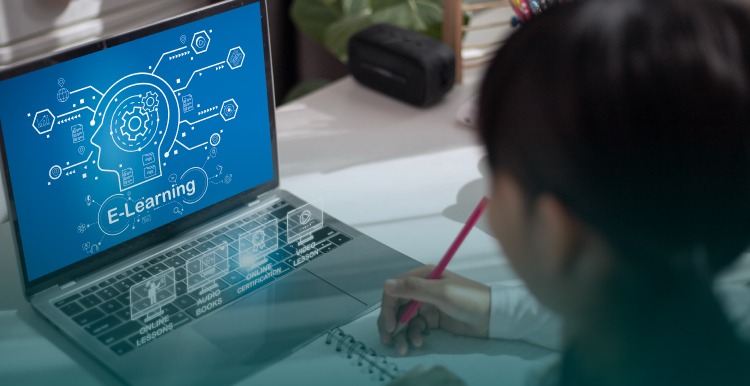Introduction: The Digital Classroom Revolution
In today’s rapidly evolving educational landscape, tech has fundamentally transformed how knowledge is delivered, absorbed, and applied in classrooms worldwide. The integration of digital tools and platforms has revolutionized traditional teaching methodologies, creating more dynamic, interactive, and personalized learning environments. From interactive whiteboards to educational apps and online learning management systems, technology now serves as both the medium and the message in education. This digital transformation has accelerated dramatically in recent years, with schools and institutions racing to adopt innovative solutions that enhance student engagement and learning outcomes.
The Evolution of Educational Technology
From Chalkboards to Chromebooks
The journey from analog to digital education has been remarkable. Just decades ago, chalkboards and overhead projectors represented cutting-edge classroom technology. Today, students navigate virtual reality environments, participate in global video conferences, and collaborate on cloud-based projects. This evolution reflects broader societal shifts toward digitization and interconnectivity.
Key Technological Advancements in Education
Several pivotal technologies have shaped modern educational approaches:
- Artificial Intelligence: Adaptive learning platforms that personalize content based on individual student progress
- Cloud Computing: Enabling seamless access to educational resources regardless of location
- Mobile Technology: Creating opportunities for learning beyond traditional classroom boundaries
- Learning Analytics: Providing data-driven insights into student performance and engagement
The Changing Role of Educators
In this technologically enhanced educational ecosystem, teachers find themselves navigating new roles and responsibilities. No longer just disseminators of information, educators now serve as facilitators, curators, and guides in the learning process. They must develop digital literacy alongside subject expertise, learning to leverage technology effectively while maintaining meaningful human connections with students. The most successful educators embrace technology not as a replacement for traditional teaching but as a powerful complement that extends their capabilities and reach.
Professional Development in the Digital Age
Keeping pace with technological advancement requires ongoing professional development. Educational institutions increasingly invest in training programs that help teachers master new digital tools and platforms. These programs often focus on both technical proficiency and pedagogical application, ensuring that technology serves educational objectives rather than becoming an end in itself.
Building Digital Literacy and Critical Thinking
Beyond technical skills, teachers must cultivate critical thinking about technology itself. This includes helping students evaluate online information sources, understand digital citizenship, and recognize both the potential and limitations of technological solutions. In an era of information abundance, discernment becomes as important as access.
Impact on Student Learning and Engagement
Personalized Learning Pathways
Technology enables unprecedented customization of educational experiences. Adaptive learning platforms can adjust difficulty levels, presentation methods, and pacing based on individual student responses and progress. This personalization addresses the diverse needs and learning styles present in any classroom, potentially reducing achievement gaps while challenging high-performing students.
Expanding Access to Quality Education
Digital platforms have democratized access to educational resources that were once available only to privileged populations. Students in remote or underserved communities can now access lectures from world-class institutions, participate in global learning communities, and utilize sophisticated learning tools. This expanded access represents one of technology’s most significant contributions to educational equity.
Collaborative and Project-Based Learning
Digital tools facilitate collaboration that transcends physical boundaries. Students can work together on projects across classrooms, schools, and even countries, developing both subject knowledge and essential collaborative skills. These authentic learning experiences often result in deeper engagement and retention than traditional instructional methods.
Challenges and Considerations
The Digital Divide
Despite technological advances, significant disparities persist in access to devices, high-speed internet, and technological support. These inequities can exacerbate existing educational gaps if not addressed through thoughtful policy and resource allocation. Ensuring equitable access remains one of education’s most pressing challenges.
Balancing Screen Time and Direct Experience
As digital learning increases, educators must consider the appropriate balance between screen-based and hands-on learning experiences. Research suggests that while technology offers valuable educational opportunities, physical engagement, face-to-face interaction, and direct experience remain essential components of holistic development, particularly for younger students.
Privacy and Security Concerns
The collection and use of student data raise important questions about privacy, security, and appropriate boundaries. Educational institutions must develop robust policies that protect sensitive information while still leveraging data’s potential to improve learning outcomes.
Future Directions in Educational Technology
Emerging Technologies in Education
The educational technology frontier continues to advance with promising developments in:
- Extended Reality (XR): Immersive learning experiences that blend virtual and physical environments
- Blockchain: Secure, verifiable academic credentials and learning pathways
- Internet of Things (IoT): Smart classrooms that adapt to student needs in real-time
- Robotics: Hands-on experiences that develop programming and engineering skills
Preparing Students for a Technological Future
Perhaps most importantly, technology in education helps prepare students for careers and challenges that don’t yet exist. By developing technological fluency alongside critical thinking, creativity, and adaptability, educational technology builds the foundation for lifelong learning in an increasingly digital world.
Conclusion: A Balanced Approach
The integration of technology in education offers extraordinary possibilities while presenting significant challenges. The most successful educational approaches recognize technology as a powerful tool rather than a panacea, employing it thoughtfully to enhance rather than replace human connection and guidance. As we navigate this digital transformation, maintaining focus on fundamental educational goals—developing curious, critical, and compassionate learners—remains essential. The future of education will likely be neither fully digital nor traditionally analog, but rather a thoughtful hybrid that draws on the strengths of both approaches to create more effective, engaging, and equitable learning experiences for all students.
